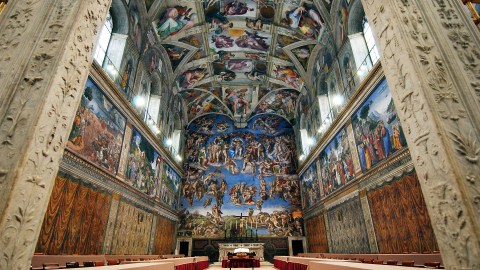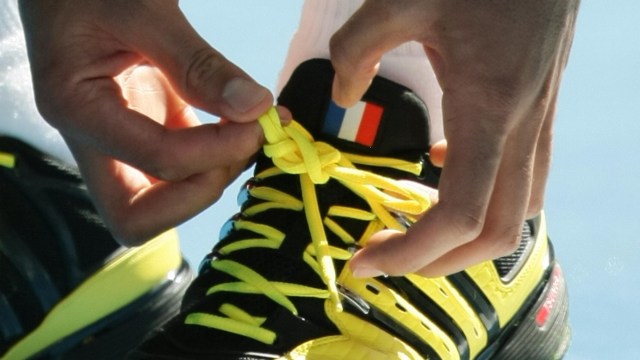Did Michelangelo Hide Secret Messages in the Sistine Chapel’s Ceiling?

Visitors have marveled at the ceiling of the Sistine Chapel for over five hundred years. It draws millions of tourists annually and holds a special place in Christianity. Besides serving as the Pope’s private chapel, it’s also where a papal enclave takes place, should the pontiff pass on, and the need arise to elect a new one. The last one was in 2013.
At age 33, Michelangelo Buonarotti began the project. It was 1508. He finished in 1512. It wasn’t easy. He painted mostly standing up, not on his back as rumored. Craning his neck for long hours caused him terrible headaches, spasms, and muscle cramps. A mold bloom made him scrap the first draft. He scraped the whole ceiling and started over. The great master even had to create a system of scaffolding and platforms to allow him to complete the work.
Michelangelo was already a renowned sculptor whose David and Pieta caused shock waves across Europe. The resulting fame won him Pope Julius II’s commission. He saw himself as a sculptor and didn’t take painting seriously. He also thought the offer a plot perpetrated by his rivals, including fellow ninja turtle namesake, Raphael. This master of human anatomy ultimately “sculpted” his figures onto the chapel’s ceiling.

Behind the figure of God, the clouds form a brain. Neurosurgery. May 2010.
Without an initial plan on how to lay it out, the breadth and intricate detail of the final work is nothing short of spectacular. Measuring 12,000 sq. ft. (1,100 m²), it includes nine scenes from the Old Testament and more than 300 life-like figures. Their portrayals and natural anatomy are said to have inspired generations of artists and scientists. The panel “The Creation of Adam,” where God and Adam’s fingers nearly touch, is one of the most recognizable and reproduced artworks in human history.
Though it was the Renaissance, the church was extremely strict, and running afoul of the authorities proved dangerous for one’s life and freedom. That’s why it’s fascinating to consider that one of history’s greatest artists hid secret images in his most famous work. Sounds like something from a Dan Brown novel.
Consider “The Creation of Adam.” In 1990, physician Frank Lynn Meshberger discovered something, a brain hidden in God’s figure where the robes of the angels flanking him intertwine. It’s believed to signify God’s bequeathing of intelligence to humankind.
The cloud behind God is also said to be in the shape of a brain. That’s not nearly all. One of the angel’s feet is two-cleft like a horse. But Dr. Meshberger believes if you look closer, you’ll see the dual lobes of the pituitary gland. In 2000, a kidney specialist found a kidney hidden in another panel. That makes sense, as the artist suffered from kidney stones.

Note the smoothness on other figures, yet the bumpiness in God’s chin. Neurosurgery. May 2010.
A 2010 study uncovered another brain hidden in the panel, “The Separation of Light From Darkness.” It’s underneath God’s uplifted chin, within his neck. The brain stem, parts of the temporal lobe, the medulla, and other structures are clearly visible. This part of the body is actually smooth, which is why it stuck out.
The study conducted by medical illustrator Ian Suk and neurosurgeon Dr. Rafael J. Tamargo, was published in the journal Neurosurgery. The use of light and God’s short-cropped beard—which is usually portrayed as long and flowing, added weight to the argument, though some scholars remain dubious. The hairs in his beard even curl upward to reveal the image beneath.
The prodigy, starting in his teens, was known to dissect and study corpses in the church graveyard, which is why his sculptures were so life-like. The fact that he had mastered the portrayal of human anatomy makes the bumpiness of God’s neck stick out. “It’s an unusual view of the brainstem, from the bottom up. Most people wouldn’t recognize it unless they had extensively studied neuroanatomy,” Suk said.

In the same panel, God is in a red robe. Optic nerves are portrayed in the twists of his robe, around his waist, in the same way as is found in a Da Vinci illustration from 1487. The two men were contemporaries and kept tabs on one another. Look closely and you’ll notice a structure in his chest. Another unnatural roll of fabric there is the figure of a human spinal cord, according to Suk and Tamargo, both of Johns Hopkins. “It looks like the central nervous system may have been too good a motif to use only once,” Tamargo said.
A 2016 Brazilian study published in the journal Clinical Anatomy, found that in addition to internal organs, the artist may have also imbued the work with female anatomical structures. A ram’s skull that looks very much like a uterus appears eight times throughout the painting.
Women are depicted as brawny to project female strength. Yet, art historians counter that the reason is, he only studied male cadavers. They also posit that the eight triangles in the piece all facing downward symbolize the female anatomy and in this way, allude to the “sacred feminine.” This was a motif held in high esteem in Greco-Roman art, but which threatened the male-dominated church. Women also take frontstage in certain scenes, which is taken as a way of honoring women.
Was the use of hidden symbols the artist thumbing his nose at the church, an homage to science—glorifying the human mind, a recognition of the divine feminine, or offering some other cryptic meaning? Interpretations will spiral off for years to come. One wonders if we will ever uncover the mysteries behind these hidden organs or if the answers are lost to the cavernous maw of oblivion.
To learn more about secret messages in Renaissance art, click here:





